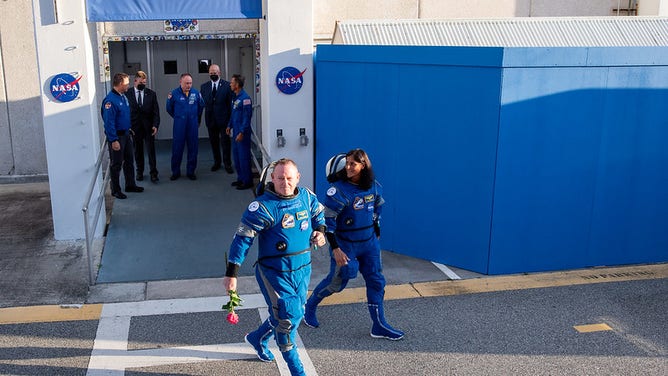CAPE CANAVERAL, Fla. – Boeing and NASA teams working toward sending the Starliner spacecraft with two astronauts to the International Space Station are waiting a little longer for the spacecraft’s first human spaceflight.
Following years of delays and additional testing, Boeing’s CFT-100 Starliner spacecraft was scheduled to launch NASA astronauts Suni Williams and Butch Wilmore on Monday night to the space station on what is known as the Crew Flight Test (CFT) for Starliner.
Liftoff was scheduled for 10:34 p.m. ET on Monday from Cape Canaveral Space Force Station in Florida. The Starliner is mounted on United Launch Alliance’s Atlas V rocket, ready for launch from Space Launch Complex 41.
By Monday evening, the countdown was underway, and the astronauts had arrived at the launch site. However, nearly 2 hours before launch, ULA’s launch director declared a scrub due to a faulty oxygen relief valve on the Atlas V rocket’s second stage.
ULA CEO Tory Bruno said the valve was “buzzing” loudly enough that the blue team in the launch tower white room helping the astronauts into the capsule could hear the issue.
Resolving the valve issue would have involved changing the rocket’s fueled state, with the crew onboard violating the flight rules. After the crew was off the rocket and the valve was cycled, the buzzing stopped.
“If it were a satellite, we would have simply cycled the valve, the buzzing would have stopped, finished the count and launched,” Bruno said. “That’s not what we planned for crew missions. So we stay with the rules and procedures.”
ULA’s team will work through the night to determine if the valve has enough lifespan to try another launch attempt this week. If not, the rocket will roll back to the ULA’s vehicle integration facility, and the valve will be replaced.
Other launch window opportunities this week are Tuesday, Friday and Saturday. If the valve requires replacement, it will be several days before the Atlas V is ready to launch again.
Prior to the scrub, Williams and Wilmore were helped into their “Boeing Blue” flight suits in the Operations and Checkout Building at KSC. The pair then waved and said goodbye to family and friends before being driven to the launchpad in the Astrovan II.
Boeing Commercial Crew Program manager Mark Nappi said before the launch was called off the countdown was going smoothly and even about 45 minutes ahead of schedule.
When it happens, the liftoff will mark the 100th mission for ULA’s workhorse rocket and the rocket’s first mission supporting human spaceflight.
The final Starliner test comes after more than 10 years of testing and development. In 2014, NASA awarded contracts to Boeing and SpaceX to fly astronauts to the ISS with commercial spacecraft. A crewless Starliner launched to the ISS two years ago and returned to Earth during an orbital flight test (OFT).
NO ‘JITTERS’ FOR NASA ASTRONAUTS PREPARING TO LAUNCH ON BOEING STARLINER SPACECRAFT
Starliner was set to launch Williams and Wilmore last summer, but Boeing managers revealed new issues with the spacecraft after further examining data from Starliner’s OFT orbital flight test in May 2022. Boeing launched an orbital test flight without astronauts twice because of a botched first attempt in 2019 that failed to reach the ISS.
Both astronauts are retired Navy captains going to space for the third time. As the CFT crew, the astronauts will test out Starliner’s capability to certify the spacecraft for future astronaut missions. As former Navy test pilots, both astronauts say it is an honor.
“I sort of have to pinch myself a little bit to understand we’re actually going,” Williams told reporters this week.
The veteran astronauts will spend about a week on the International Space Station testing Starliner’s systems before returning to Earth.
A successful CFT will culminate in a soft landing of the Starliner spacecraft in the Southwest desert.









